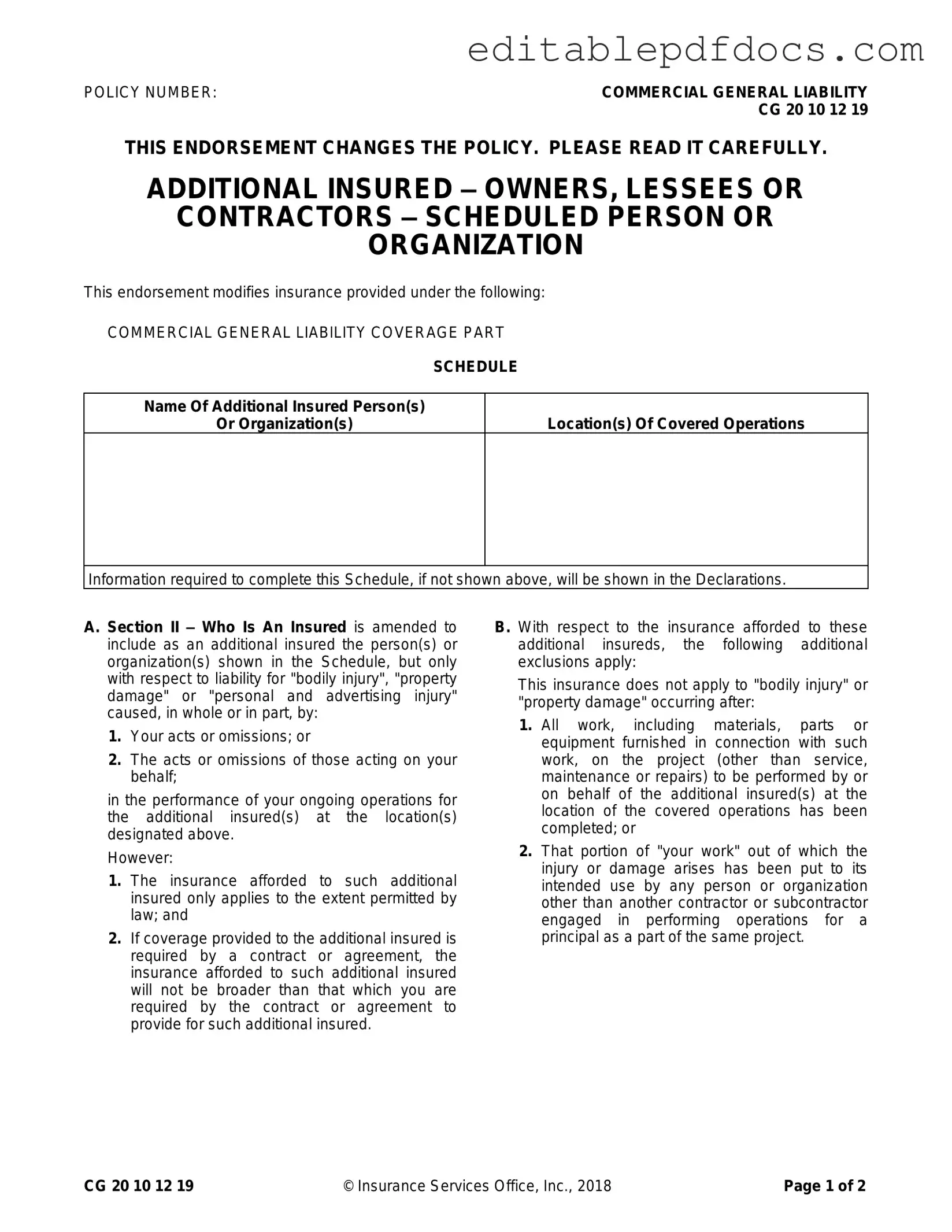Filling out the CG 20 10 07 04 Liability Endorsement form requires attention to detail. One common mistake is failing to clearly list the additional insured names. Ensure that each person or organization is accurately spelled and complete. Missing or incorrect names can lead to coverage disputes later.
Another frequent error involves neglecting to specify the location(s) of covered operations. Without this information, the endorsement may not provide the intended protection. Be precise about the locations where the additional insureds will operate to avoid potential gaps in coverage.
People often overlook the importance of understanding the limitations of coverage provided. The endorsement explicitly states that coverage only applies to liabilities arising from your acts or omissions. Ignoring this can result in misunderstandings about the extent of protection available to the additional insured.
Many individuals fail to recognize that the endorsement modifies existing policies. Not reading the endorsement carefully can lead to misinterpretation of the coverage. It’s essential to understand how this endorsement interacts with the overall policy to ensure compliance with any contractual obligations.
Another mistake is not checking the contractual requirements for additional insured coverage. If the contract specifies certain conditions, the endorsement must align with those. Failing to adhere to these requirements can render the endorsement ineffective.
Some applicants do not take the time to review the exclusions listed in the endorsement. Ignoring these exclusions can result in unexpected liabilities. It's crucial to be aware of what is not covered, such as injuries occurring after work has been completed.
Lastly, people sometimes miscalculate the limits of insurance applicable to the additional insured. The endorsement states that the coverage will not exceed what is required by the contract. Ensure that you understand these limits to avoid underinsuring the additional insured.
By being aware of these common mistakes, you can better navigate the complexities of the CG 20 10 07 04 Liability Endorsement form. Take the time to review each section carefully, and consult with a professional if needed.
